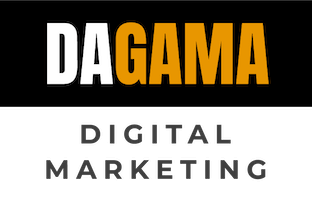In the infinite landscape of digital marketing, SEO stands as the cornerstone of online success. With a career spanning 29 years owning DaGama Digital Marketing Agency, I’ve continually witnessed the evolution of SEO firsthand. I’ve developed SEO strategies that withstand Google’s changing algorithmns. This is not just a theoretical benefit; it’s a practical reality for my clients, who enjoy top 3 and top 5 positions, translating into increased online visibility and business growth worth hundreds of thousands of dollars over the course of a year; and millions over several years. But how can you make sure your SEO is tuned-up and humming along properly? Just read today’s helpful blog post: The SEO Tune-Up Checklist, a comprehensive guide to keeping your website in top form for having the best possible chance of ranking high on search engines like Google and Bing – depending on your competition, of course.
Why You Need a Quarterly SEO Tune-Up
You need a positive reputation with omnipresence because consumers research brands/companies more now post-pandemic than before. And what they find about you has to be positive, of course, or they won’t call you, contact or connect with your company. They will go somewhere else. Forrester Research did a study on post-pandemic consumer behavior. Here’s the most interesting observation:
The Number Of Buying Interactions Jumped By 10
Although the number of buying interactions has been increasing slightly every two years (e.g., from 16 to 17 between 2017 and 2019), the number of buying interactions during the pandemic jumped from 17 to 27! The number of buying interactions reflects one individual’s buying journey to obtain information about competing offerings or providers. In the total number, we include self-guided interactions (mostly done by research via the internet) and personal interactions, which refer to a conversation with a person, from either a provider company or third party. Almost all of these conversations took place virtually last year.
SEO, or Search Engine Optimization, is the art and science of improving your website’s visibility on search engines like Google and Bing.This means your website needs to be found in the top three positions for multiple keywords that your prospects are using in searches. Consumers do more research nowadays than ever before while in the process of searching on Google. They have to find you first; and then they’ll decide to call you, contact you or connect by coming in to buy something from you. Without that visibility high up in the search results – especially on mobile searches – you’re basically invisible. SEO, when done right, gets your business visible. Let’s dive into the essentials.
SEO Basics
At its core, SEO revolves around keywords. These are the words and phrases your target audience uses to find information online. Conduct thorough keyword research to understand what terms are relevant to your business. Many free and paid keyword research tools exist. Many people use the following:
- Ahrefs Keywords Explorer
- Moz Keyword Explorer
- SEMrush
- Long Tail Pro
- Google Keyword Planner (You have to set up a Google Ads account to use this but you don’t have to buy any ads.)
Technical SEO
Ensure your website is mobile-friendly. With the majority of internet users on mobile devices, this is non-negotiable and should be well-known by now but sometimes I still meet new clients who’ve never looked at their websites on mobile. And sometimes the mobile presentation is hurting their business.
Another important technical SEO thing you should check is your website’s loading speed. Slow sites can turn visitors away. You only have 2.5 seconds to hook your visitor into staying and exploring more pages. So make sure your website loads fast. Here’s the Google Page Speed test you can check your site with now.
- Lack of Structured Data (Schema Markup): Missing out on structured data can result in lost opportunities for enhancing search listings and improving click-through rates.
- Broken Links and 404 Errors: Having a high number of broken links or 404 errors can damage your site’s usability and trustworthiness in the eyes of search engines.
Schema Markup
Do you have a WordPress website? For managing schema markup on your WordPress website, there are several tools and plugins specifically designed for this purpose. Schema markup helps search engines understand the content of your site better, potentially leading to rich snippets in search results. Example: star symbols (indicating a 5-star rating) appearing in the search result is due to a rich snippet of code being used.
Here are some good Schema Markup tools:
Schema Pro: This plugin automates the process of adding schema markup to your WordPress site. It supports a wide range of schema types and allows for easy customization without needing to write any code. Schema Pro can automatically apply relevant schema markup across your site, enhancing your site’s presence in search results. More about Schema Pro can be found on their official website.
Yoast SEO: While primarily known for its SEO capabilities, Yoast SEO also includes features for adding schema markup to your posts and pages. It simplifies the process of integrating basic schema types like Article, Breadcrumb, and Person. You can learn more about Yoast SEO’s schema features on the Yoast SEO website.
All in One Schema Rich Snippets: This plugin is focused on providing a straightforward way to add various schema markup types like reviews, events, people, products, recipes, and more. It’s user-friendly and helps improve how your posts look in search results. More information is available on the WordPress plugin repository.
WP SEO Structured Data Schema: This tool provides extensive options for schema types and is suitable for those looking for more control over their schema markup. It’s a bit more advanced but offers greater flexibility. Check out more details on the WordPress plugin repository.
Rank Math: Rank Math is another SEO plugin that includes schema markup functionality. It offers a simple interface to add schema markup and supports a wide range of schema types. Rank Math’s schema module is quite intuitive and easy to use. Find more about Rank Math on their official website.
Here are five websites where you can check various aspects of technical SEO:
Google Search Console: A free tool for monitoring your website’s presence in Google search results. It helps identify indexing issues, website errors, and provides insights into your site’s performance in search results. Google Search Console is sometimes incorrect with its assertions. Be sure to cross-check with another great technical tool like Ahrefs.
Screaming Frog SEO Spider: A powerful and flexible site crawler, capable of crawling both small and very large websites efficiently, while allowing you to analyze the results in real-time. It’s great for identifying technical issues. Screaming Frog SEO Spider
GTmetrix: Provides insights into how well your site loads and provides actionable recommendations on how to optimize it. It’s particularly useful for assessing page speed and performance, which are key components of technical SEO. GTmetrix
Moz Pro Site Crawl: Offers a suite of tools including a site crawler that can help you identify and fix common SEO issues. It provides detailed reports and suggestions for improving your website’s SEO performance. Moz Pro Site Crawl
SEMrush Site Audit: This tool crawls your site to find issues that might be hindering its performance in search engines. It covers a broad range of SEO aspects including technical SEO, site speed, and more. SEMrush Site Audit
On-Page SEO
Craft compelling title tags and meta descriptions. These snippets appear in search results and can greatly influence click-through rates. Use header tags (H1, H2, H3) to structure your content, and incorporate keywords naturally. This is all done in the code itself. You’ll need to access the code of your website. Most SEOs use a tool such as Yoast; Rank Math;
Off-Page SEO
Building quality backlinks is a critical off-page strategy. Engage in ethical link-building practices. Social media presence also matters; it can boost your website’s credibility.
Content Quality: Google’s Helpful Content Update
Content is king, but only if it’s of high quality. Avoid duplicate content, as it can harm your rankings. Produce engaging, informative, and unique content that resonates with your audience.
User Experience (UX)
A well-structured website with intuitive navigation is key. Your site should also be responsive to various devices. A seamless UX keeps visitors on your site longer.
SEO Tools
So many tools! Only with decades of experience doing SEO, do I know of the best tools to use. I’m continually on the lookout for new ones – especially now that AI is becoming more and more like the air we breath, as far as new techn is concerned. Leverage tools for keyword research and analytics to track your SEO performance. Stay informed about what’s working and what needs improvement.
SEO Trends
SEO is a dynamic field. Keep an eye on emerging trends like voice search optimization. Adapt to stay competitive.
Local SEO
Local businesses should optimize for local search. Claim your Google My Business listing and ensure it’s up-to-date.
Measuring SEO Success
Identify key performance indicators (KPIs) to measure your success. Monitor these metrics consistently to track your progress.
Common SEO Mistakes
Here’s a list of critical general and technical SEO mistakes to avoid:
- Ignoring Mobile Optimization: Not having a mobile-friendly website can significantly impact your SEO due to the prevalence of mobile searches.
- Overusing Keywords (Keyword Stuffing): Repeating keywords excessively can be seen as manipulative by search engines and harm your SEO.
- Neglecting Meta Descriptions and Title Tags: Overlooking these elements means missing key opportunities to communicate page content to search engines and users.
- Publishing Low-Quality Content: Content that lacks value or is duplicated can lead to poor user engagement and search engine penalties.
- Ignoring Backlink Quality: Prioritizing backlink quantity over quality can negatively impact SEO, as search engines favor high-quality, relevant backlinks.
- Poor Website Loading Speed: Slow loading times can lead to high bounce rates, affecting both user experience and SEO.
- Unoptimized Images: Large image files without optimization can slow down your page load times, affecting SEO and user experience.
- Not Using HTTPS: Lacking a secure HTTPS website can affect your SEO rankings as search engines prioritize website security.
- Lack of Structured Data (Schema Markup): Missing out on structured data can result in lost opportunities for enhancing search listings and improving click-through rates.
- Broken Links and 404 Errors: Having a high number of broken links or 404 errors can damage your site’s usability and trustworthiness in the eyes of search engines.
You can take that list and have your marketing team or webmaster ensure those items have been checked and/or fixed if they exist and you’ll be 100 times better off than you are now.
The SEO Tune-Up Checklist is your roadmap to online success
Hope this was helpful! The SEO Tune-Up Checklist is your roadmap to online success. By following these steps, you’ll ensure your website is in peak condition for search engines. Keep learning and adapting, and your online presence will thrive. SEO is very much like nurturing a garden. Be sure to tend to it daily.
FAQs (Frequently Asked Questions about The SEO Tune-Up Checklist)
Q: What’s the most important aspect of SEO?
A: The most crucial elements of SEO are quality content and effective keyword optimization. These are key to achieving success in SEO.
Q: How often should I update my SEO strategy?
A: Your SEO strategy should be updated regularly. SEO is a constantly evolving field, so it’s important to stay current with industry changes and trends.
Q: Can I do SEO on my own, or should I hire a professional?
A: Whether you should handle SEO on your own or hire a professional depends on your level of expertise. While basic SEO can be managed independently, complex strategies often benefit from a professional’s touch.
Q: Why is local SEO important?
A: Local SEO is crucial for businesses because it helps attract customers in their vicinity. Optimizing for local search is vital for the success of local businesses.
Q: What’s the biggest SEO mistake to avoid?
A: The biggest mistake to avoid in SEO is the use of black-hat techniques. These methods can lead to penalties from search engines and negatively impact your site’s ranking.
Final Words About The SEO Tune-Up Checklist
As we wrap up our journey through the SEO Tune-Up Checklist, let’s remember the key takeaways that make it an indispensable guide. First and foremost, focus on creating high-quality, relevant content that resonates with your audience – content is indeed king in the realm of SEO. Don’t forget the power of well-researched keywords, as they are the beacon that guides users to your content. Ensure your website is mobile-friendly and loads quickly, as these technical aspects significantly impact user experience and search engine rankings.
Moreover, make sure your on-page elements like meta tags and structured data (schema markup) are in tip-top shape, as they help search engines understand and accurately represent your content. And let’s not overlook the importance of off-page factors like backlinks – ethical link-building practices can greatly boost your site’s authority.
Treat this SEO Tune-Up Checklist as your compass in the ever-evolving landscape of digital marketing. By staying true to these fundamentals, you’ll navigate your website to the “shores” of success. Remember, SEO is a continuous journey, not a one-time effort, so keep adapting and fine-tuning your strategy to stay ahead in the game. Happy optimizing!
Contact us if you’re interested in having our highly specialized SEO team manage your SEO for you. Grow faster with us doing the driving.


